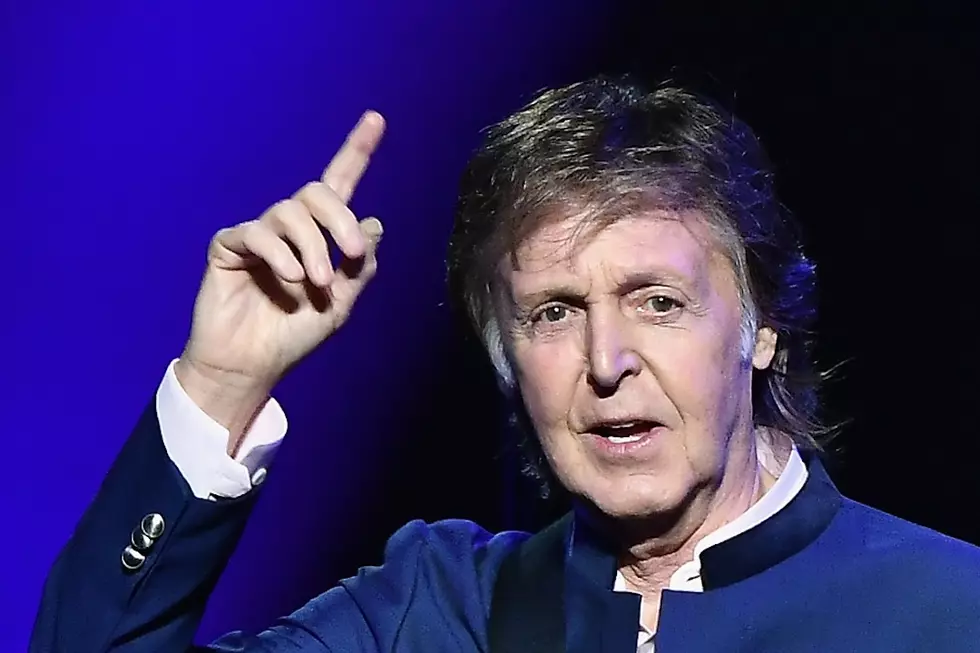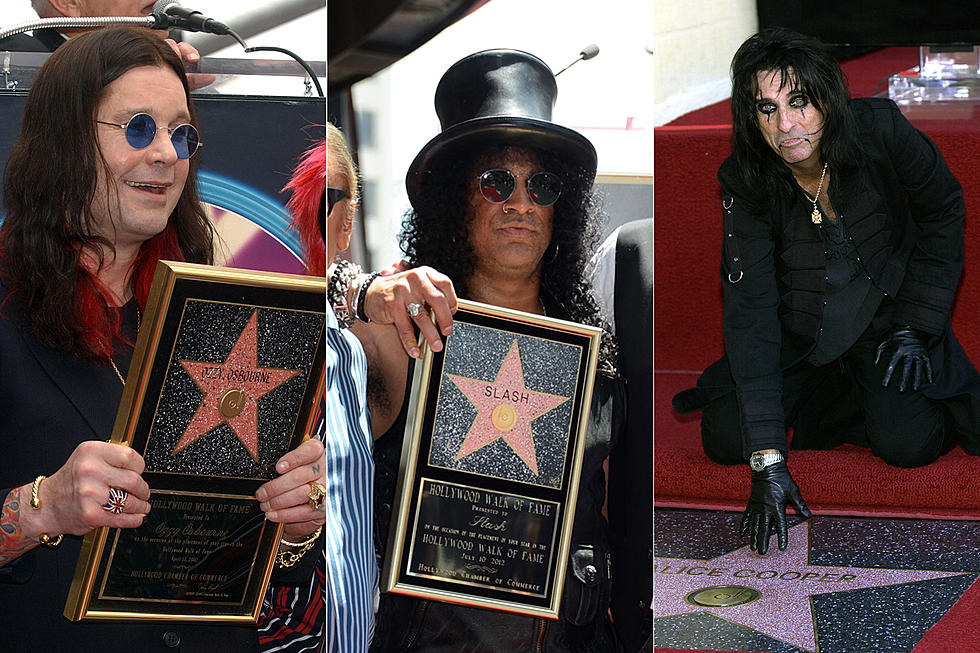
The Heaviest Song by 10 Big ’60s Rock Bands
Here is the heaviest song by 10 big '60s rock bands.
Given that heavy metal didn’t completely take off until the 1970s – and the early part of the prior decade was dominated by pop, blues, R&B, surf music and rock ‘n’ roll – you’d be forgiven for thinking that the 1960s were lacking in significantly aggressive music.
You’d be wrong, of course, but you’d be forgiven.
READ MORE: The Heaviest Song by 10 Big ‘70s Rock Bands
In fact, it was around this time that artists such as Link Wray, Willie Johnson, Sister Rosetta Tharpe and The Kinks started pioneering and popularizing guitar distortion, power chords and/or unconventional means of modifying amplifiers to get gruffer sounds.
During the second half of the 1960s, even rock artists who’re known for their lighter, brighter and poppier techniques ventured into some surprisingly hectic territories. As the songs discussed below demonstrate, many of the era’s top-tier acts released tracks that could’ve rivaled the riotousness of the burgeoning metal forefathers.
Regardless of if they represent the band’s typical degrees of hostility or stand out as atypically savage deviations from the band’s standard formula, these are the heaviest songs that came out in the 1960s from 10 big 1960s rock bands!
The Heaviest Song by 10 Big '60s Rock Bands
The Doors, “Not to Touch the Earth”
The Doors were among the decade’s most incendiary groups musically, lyrically and visually (due largely to the controversial antics and artistry of frontman Jim Morrison).
While numerous Doors tunes could’ve taken this spot (“Five to One,” “Wild Child,” “Break on Through (To the Other Side),” “The End”), we’re going with this cut from 1968’s Waiting for the Sun.
The only surviving segment of the quartet’s 17-minute “Celebration of the Lizard” performance piece, “Not to Touch the Earth” earns favor for being so avant-garde that it borders on acid rock. The keyboards, percussion and guitarwork become increasingly dissonant and bizarre as Morrison’s singing gets perpetually belligerent, and by the end, it’s nothing less than carnivalistic chaos.
Jefferson Airplane, “Volunteers”
No one would accuse Jefferson Airplane of being flat-out pop, but they definitely got punchier (and arguably more political) as they moved away from folk/blues rock and into psychedelia/experimental rock. In particular, the hurried closing title track of their fifth studio LP is engrossingly feisty instrumentally and thematically.
From beginning to end, it bursts with piercing six-string outcries, pounding percussion, impassioned singing (from multiple people), fiery piano playing and revolutionist lyricism (“One generation got old / One generation got soul / This generation go no destination to hold / Pick up the cry”).
As such, “Volunteers” essentially condensed the youth-driven anti-establishment ethos of late 1969 into a turbulent two-minute call to action.
Credence Clearwater Revival, “Fortunate Son”
This is the obvious choice, but that doesn’t mean it’s the wrong one! On the contrary, “Fortunate Son” (from 1969’s Willy and the Poor Boys) is as powerful sonically as it is intellectually.
A major anthem of the anti-Vietnam War movement, singer/songwriter John Fogerty later explained that it “speaks more to the unfairness of class than war itself. It’s the old saying about rich men making war and poor men having to fight them.” (In that way, it’s kind of a precursor to System of a Down’s “BYOB.”)
The unparalleled husky conviction of Fogerty’s voice and message are what put “Fortunate Son” on this list, yet his bandmates do more than enough to support him with sufficiently twangy and tumultuous attitude. Thus, there’s more than enough reasons for the song to become CCR’s trademark composition and a staple of pop culture over the last 55 years.
Cream, “Deserted Cities of the Heart”
Comprised of lead vocalist/bassist Jack Bruce, drummer Ginger Baker and guitarist Eric Clapton, short-lived supergroup Cream prided themselves on being Britain’s “cream of the crop” when it came to impactful musicians. Even today, there are few power trios who ever matched them, and “Deserted Cities of the Heart” shows why.
The finale to 1968’s Wheels of Fire (which also birthed “White Room”), “Deserted Cities of the Heart” nearly kicks off in medias res with Bruce’s vigorous narrative being bolstered by Baker’s relentless beats and Clapton’s distorted licks. Eventually, one of Clapton’s sharpest solos is countered by some of Baker’s busiest syncopation and some dreamy viola accompaniment (courtesy of Mountain’s Felix Pappalardi).
Cream had a lot of energetic numbers, but none were heftier than “Deserted Cities of the Heart.”
The Jimi Hendrix Experience, “Manic Depression”
Many Jimi Hendrix tracks could fit here because of his intimidatingly unrestrained approach to playing the guitar; however, if we’re sticking to 1960s releases, we’re going with the Experience’s “Manic Depression” (from 1967’s groundbreaking Are You Experienced).
Admittedly, Hendrix’s vocal is mellow, yet that only serves to make the ferociousness of his guitarwork more alarming by contrast.
What really sets “Manic Depression” apart, though, is the endless busyness of Mitch Mitchell’s drumming and Noel Redding’s bass playing. They never stop shuffling around Hendrix’s riffs and midway solo, undoubtedly leaving themselves – and listeners – exhausted by the end.
That Carnivore’s 1987 cover of it isn’t much heavier (aside from Peter Steele’s singing) confirms just how intense the original version is.
The Kinks, “All Day and All of the Night”
Released sequentially as singles, both “You Really Got Me” and “All Day and All of the Night” were extremely aggressive for 1964 (which, again, is why The Kinks are usually credited for popularizing power chords). Taking only their initial decade into consideration, there’s no denying that the latter tune ended up being their most abrasive song.
Guitarist Dave Davies’ scratchy tone is central to the anarchy – his solo still bites! – and the rising harmonies during the pre-chorus add to the dense weightiness. Of course, the rhythm section is relatively thunderous, too, and frontman Ray Davies sounds downright punky as he belts out the chorus.
Like a lot of their contemporaries, The Kinks’ music became increasingly polished and ornate as the ‘60s went on, so it’s no shock that their crudest material came at the start.
The Byrds, “I See You”
Given their penchant for folk/raga rock – as well as the softness of early gems such as “Mr. Tambourine Man” and “Turn! Turn! Turn!” – you might not think that The Byrds got markedly hostile. That said, 1966’s Fifth Dimension proves otherwise, particularly with the rambunctious “I See You.”Aside from its coarse six-string riffs and complicated percussion, “I See You” (alongside “Eight Miles High” from the same record) earns distinction for Roger McGuinn’s utterly disordered – and almost incongruous – guitar licks in-between the verses. It’s a startling tactic that gives “I See You” plenty of edge, and whether directly or not, McGuinn’s technique could later be heard in the DNA of acts such as Yes and King Crimson.
In fact, Yes covered the tune on their self-titled 1969 debut LP.
Pretty Things, “Baron Saturday”
Although they weren’t necessarily among the biggest bands of the 1960s, English troupe Pretty Things were nevertheless beloved and highly influential. Just look at 1968’s S. F. Sorrow, one of the best albums of the era and the first rock opera (predating The Who’s better-known Tommy by about half a year). It’s packed with forceful numbers – “Bracelets of Fingers,” “The Journey,” “Balloon Burning” – but it’s “Baron Saturday” that takes the cake.
Honestly, the verses are fairly relaxed (and trippy), but they’re suspenseful enough to make the ensuing commotion seem even more hectic. On that note, it’s the raspy screaming during the chorus (and the nightmarish arrangement around it) that cements the song’s wildness. Plus, the middle section is all about psychedelic noise, presenting a level of rawness not found anywhere else on S. F. Sorrow.
The Yardbirds, “Happenings Ten Years Time Ago”
The Yardbirds helped introduce the world to three of rock music’s greatest guitarists (Eric Clapton, Jimmy Page and Jeff Beck), so they had to be featured on this list. Considering that 1966 single “Happenings Ten Years Time Ago” is built around Page and Beck dueling it out from start to finish, it’s the obvious choice.
Indeed, the track was later called “a full-on six-string apocalypse” by writer Alan Di Perna, and every moment lives up to that description. The pair’s prickly counterpoints and leads are as invigorating as they are dissonant, with drummer Jim McCarty and future Led Zeppelin bassist/keyboardist John Paul Jones fortifying the frenzy.
At one point, Page even emulates a police siren, prompting “Happenings Ten Years Time Ago” to erupt into absolute bedlam.
The Beatles, “Helter Skelter”
You didn’t think we’d forget about “Helter Skelter” from 1968’s The Beatles (a.k.a. The White Album) did you? Penned by Paul McCartney to surpass The Who’s “I Can See for Miles” as the rowdiest rock composition of all time, “Helter Skelter” is widely hailed as the first heavy metal song.
Inspired by an amusement ride (and not what Charles Manson perceived), the Beatles classic was unprecedentedly noisy thanks chiefly to McCartney’s trademark throat-tearing singing. Seriously, it’s a miracle that he wasn’t coughing up blood by the end of the recording session! Naturally, the rest of the Fab Four back him with an onslaught of harsh guitarwork and roaring drumming.
By the end of it, Ringo Starr’s hands were so damaged that he famously yelled: “I’ve got blisters on my fingers!”
More From Loudwire









